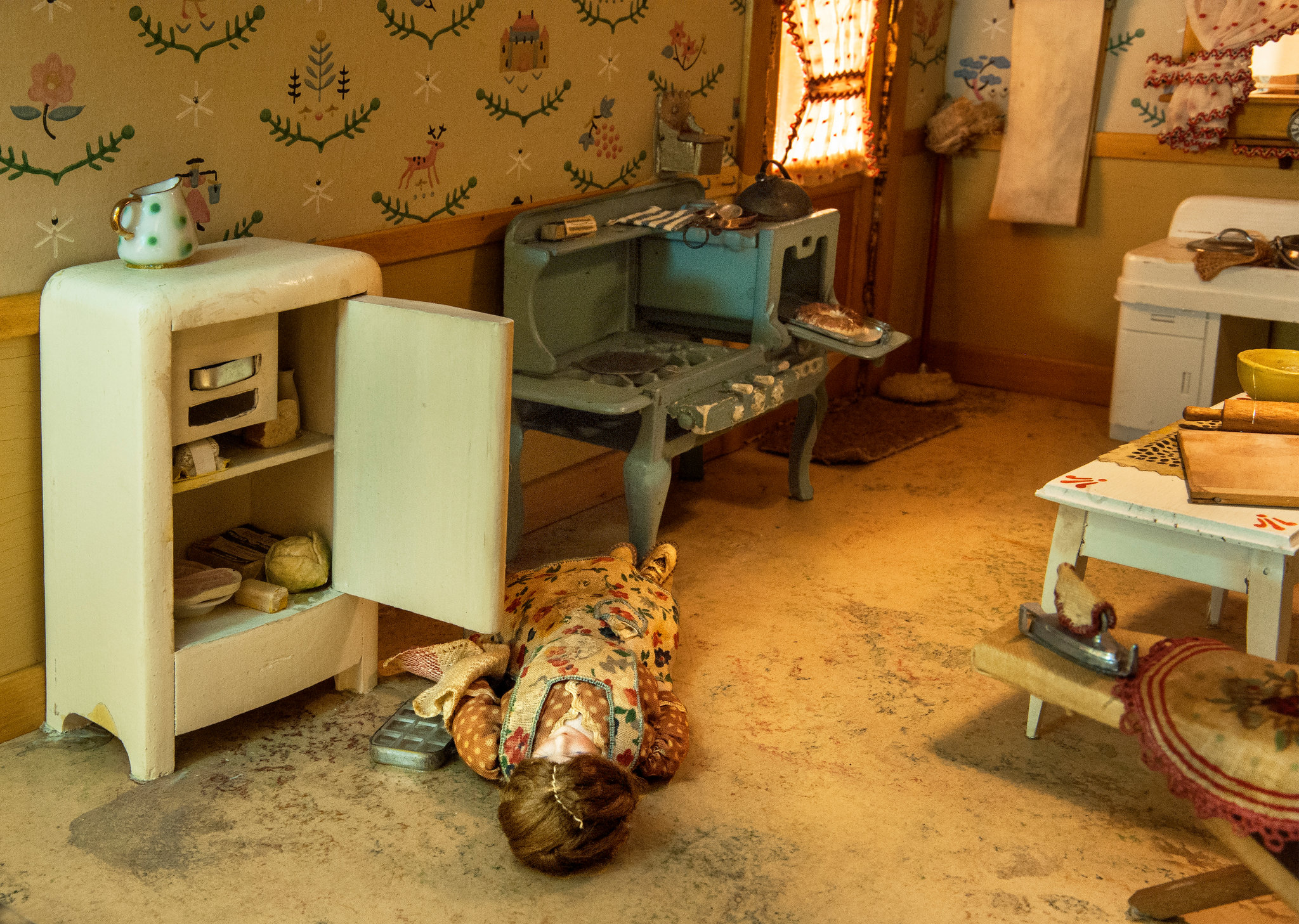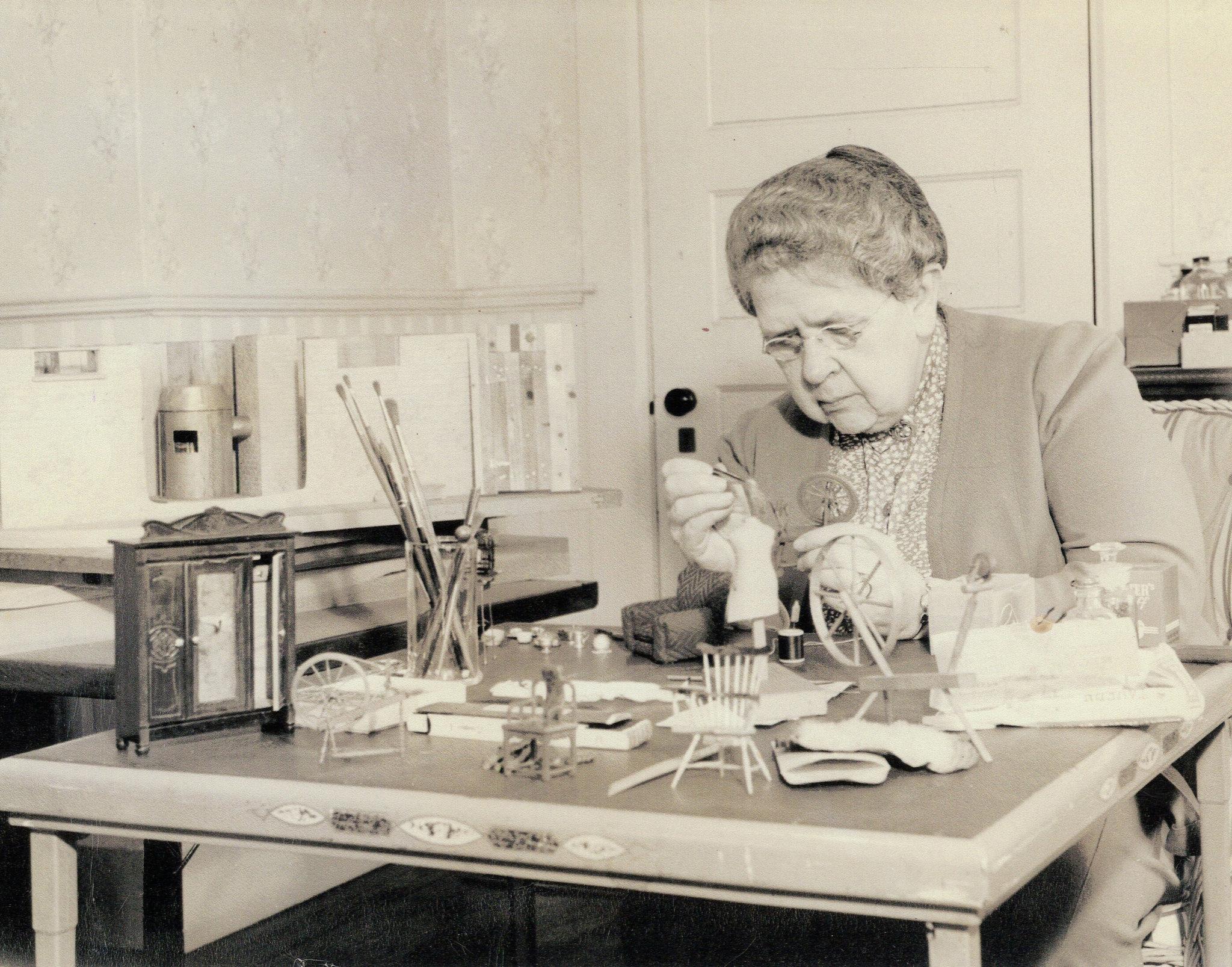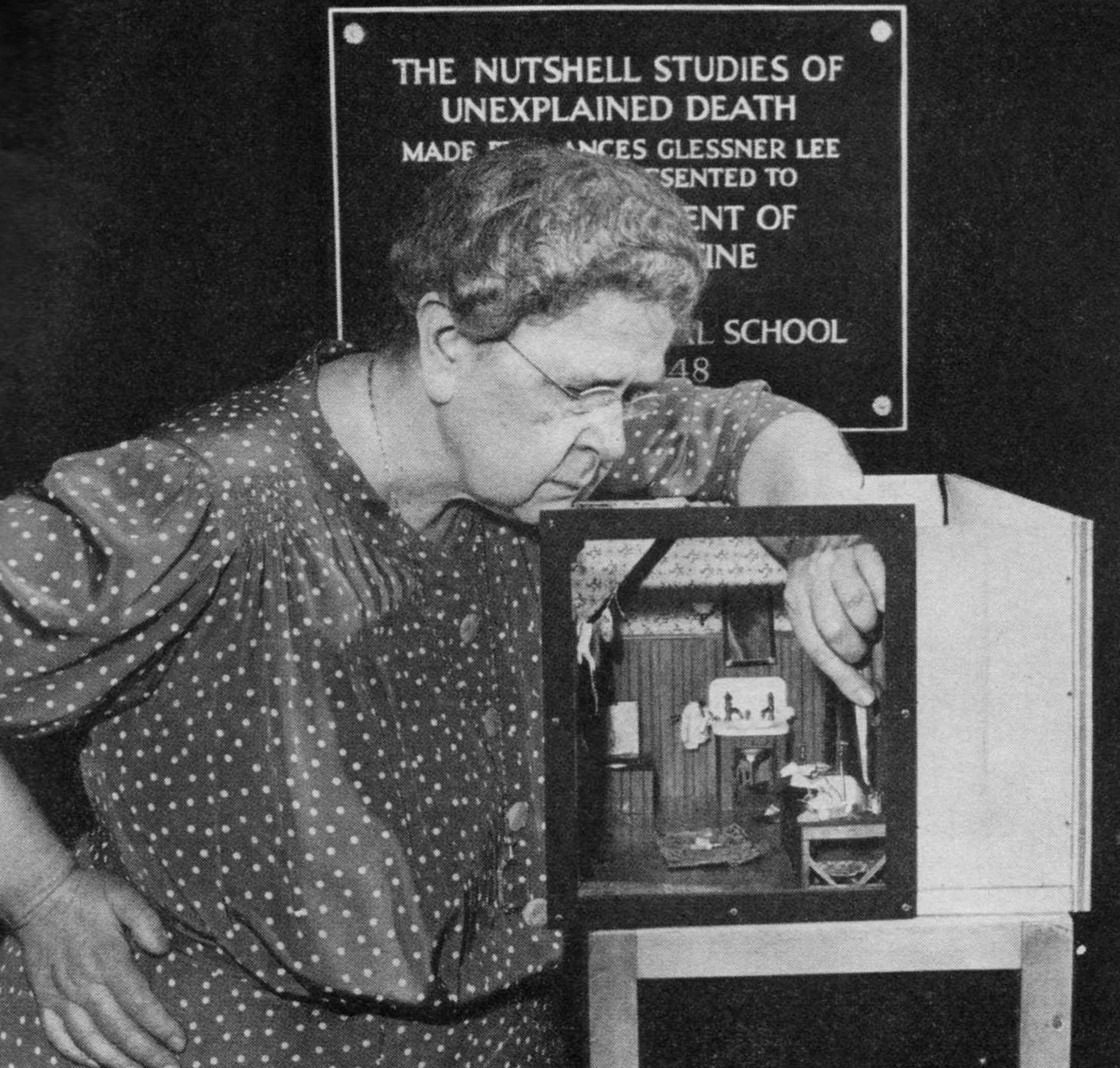
Murder Is Her Hobby: The Nutshell Studies Return to Baltimore
Heiress, crime novel enthusiast, and miniature hobbyist, Frances Glessner Lee (1878-1962) created 20 miniature dioramas depicting real crime scenes. Nineteen survived and were recently highlighted in the Smithsonian American Art Museum’s Renwick Gallery’s “Murder is Her Hobby: Frances Glessner Lee and the Nutshell Studies of Unexplained Death.” Although the exhibit has closed, enthusiasts are able to coordinate viewings through the Office of the Chief Medical Examiner in Baltimore, where the collection is on permanent loan from Harvard University. The miniature depictions were built to a one-inch to one-foot ratio. The Mother of Forensic Science’s contribution to the budding field were her keen eye for detail and craftsmanship in recreating an exact replica of a horrible, deadly scene.
Mrs. Lee, informally called “Fanny,” was born to wealthy parents. Her father, John Jacob Glessner, founded the International Harvester Company. She was raised in the prestigious Prairie District at 1800 S. Prairie Avenue in Chicago and educated by the finest tutors. Her brother, George, was permitted to continue his education at Harvard. Unfortunately, Fanny’s parents refused to send her to university. Instead, at 19 she married Blewett Lee, General Counsel at Illinois Central Railroad. After three children and 16 years of marriage, the couple divorced in 1914. Fanny returned to a teenage hobby: miniatures.
Fanny spent hours crafting miniature dioramas. She was an avid crime reader and was especially fond of Sherlock Holmes. The study of forensic sciences was in its infancy, and Fanny was captivated.
Brother George had a good friend, George Burgess Magrath, who educated Fanny about crime scene investigation. Upon the deaths of her brother and parents, Fanny inherited the International Harvester fortune. She established the Department of Legal Medicine at Harvard and endowed the George Burgess Magrath Library of Legal Medicine. Magrath served as the first instructor. Sadly, Magrath died in 1938, a few short years after being installed.
Fanny was an apt student who attended autopsies, spent time observing crime scenes, and studied blood patterns. Fanny recreated real crime scenes as dioramas, although some details were changed for educational purposes. Fanny read newspaper reports and interviewed police officers and morgue employees in order to gather factual information. Enlisting the assistance of her carpenter, Ralph Mosher, Fanny built 3 dioramas per year. In 1943, “The Case of the Hanging Farmer” took 3 months to assemble.

Spending between $3,000-4,500 per diorama, Fanny recreated everything observed and/or reported at a crime scene—down to the tiniest detail. These dioramas became known as “The Nutshell Studies of Unexplained Death.” As Fanny explained: “their purpose was to convict the guilty, clear the innocent, and find the truth in a nutshell.”
Fanny was adamant. These dioramas were not meant to solve the crime. Instead, Fanny wanted these creations to be educational tools for investigators to hone their observation skills.

Below is a chronological listing of the dioramas:
- Dark Bathroom (November 1896)
- Three-Room Dwelling (1 November 1937)
- Barn (15 July 1939)
- Striped Bedroom (29 April 1940)
- Living Room (22 May 1941)
- Pink Bathroom (31 March 1942)
- Log Cabin (22 October 1942)
- Burned Cabin (15 August 1943)
- Blue Bedroom (3 November 1943)
- Kitchen (12 April 1944)
- Red Bedroom (29 June 1944)
- Saloon & Jail (12 November 1944)
- Woodman’s Shack (8 February 1945)
- Garage (7 January 1946)
- Parsonage Parlor (23 August 1946)
- Attic (24 December 1946)
- Sitting Room & Woodshed (25 October 1947)
- Two-Story Porch (5 April 1948)
- Unpapered Bedroom (4 June 1949)
For more information, view the Vox video at this link: https://www.youtube.com/watch?v=9hdT8PgT19w. Several TV shows have incorporated diorama themes into their crime investigation techniques. The most notable would be “The Smallest of Things” from Father Brown and “Post Mortem” from CSI: Crime Scene Investigation. Stream the episodes and see how the writers re-envision Mrs. Lee’s crime scene dioramas. It’s quite interesting!

I’ve always found these fascinating. And she was remarkable.
WHAT?! Fascinating! I never heard of this before and was delighted to read something new like this. BRAVO!
I’m so impressed you already knew of her. I had no idea! I loved this article and found it totally fascinating and inspiring!
Check out this website! http://www.ofdollsandmurder.com/
(am not affiliated with it)
They sell a DVD (about the Nutshells) that is utterly COOL. Check it out if you can.